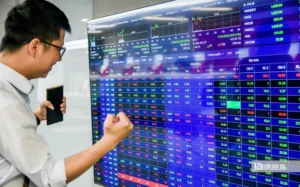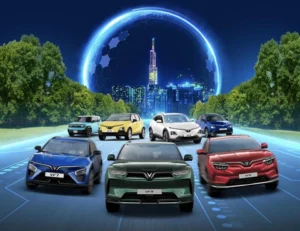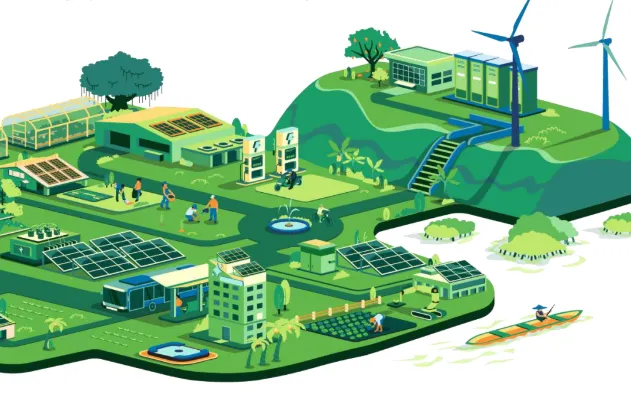As the world faces a series of macroeconomic uncertainties, Southeast Asian countries are re-examining their priorities and opportunities for a green economy . The sixth edition of the Green Economy Southeast Asia report, jointly produced by Bain & Company, GenZero, Google, Standard Chartered and Temasek, is out today, introducing a systems-based approach to driving growth and impact in the region.
If promoted through deeper cooperation in the Asia-Pacific (APAC) region, this approach could have a significant economic impact – helping the SEA-6 economies (Indonesia, Malaysia, the Philippines, Singapore, Thailand and Vietnam) gain up to US$120 billion in GDP growth, create 900,000 new jobs and close the emissions gap by 50% by 2030.
According to the report, private sector green investment in Vietnam is expected to reach US$161 million by 2024, accounting for about 2% of total investment from the SEA-6 group. Transaction volumes have increased and investment flows have shifted from solar to transportation and wind power.

Vietnam has one of the highest renewable energy ratios in the region, at 43%. The government is pushing ahead with national plans such as the Power Development Plan VIII, the National Energy Master Plan and the National Climate Change Strategy to 2050, while expanding grid infrastructure and deploying around 3,000 electric vehicle charging stations. Mandatory emissions reporting has also been introduced for key sectors.
The report emphasizes that to achieve results at scale, governments must view Southeast Asia’s green economy as a complex and interconnected set of systems. This systems approach involves identifying the barriers that are driving continued emissions in Southeast Asia’s green economies, and then finding high-impact solutions to address these barriers across multiple systems, prioritizing those solutions that have the greatest potential to create sustainable change.
These solutions help Southeast Asia maintain its direction amid macroeconomic uncertainties, while creating new green growth opportunities, improving resilience and reducing dependence on imported energy, while supporting climate goals. Southeast Asia in particular and the APAC region as a whole can see a surge in green economic growth thanks to this approach.
“ The prevailing view is that the new macro environment will slow green economic progress. However, Southeast Asia – and APAC more broadly – could see an acceleration as governments, businesses and investors recalibrate their priorities . By focusing on scalable, high-impact system-level solutions, Southeast Asia can rewrite the green economic development playbook and turn the current challenge into an opportunity. We need to achieve two key outcomes simultaneously – significant emissions reductions and sustained economic growth – for the region to achieve its climate goals while building long-term resilience and prosperity ,” said Dale Hardcastle, Partner and Co-Head of Bain & Company’s Global Sustainability Innovation Center.
This year’s report also recommends increased cooperation between Southeast Asian and APAC markets to maximize the green economic potential.
The APAC region and Southeast Asia play a key role in global decarbonization. The APAC region accounts for half of global greenhouse gas emissions, while Southeast Asia accounts for 7.5%. Both regions are heavily dependent on fossil fuels. Based on current trends, most APAC countries will miss the target by 2030, with the emissions gap widening further between 2040 and 2050. Southeast Asia, in particular, remains vulnerable due to its inability to control its rising emissions. Urgent government interventions are needed to change this trajectory and meet the target.
AI is both a challenge and an opportunity for the green economy
This report identifies three core system-level solutions critical to growth and decarbonization in Southeast Asia – including a sustainable bioeconomy, developing next-generation power grids, and building an electric vehicle (EV) ecosystem.
The report also highlights three supporting solutions to increase the impact of system-level solutions.
Climate and transition finance is growing in Southeast Asia, but the region still faces a funding gap of over US$50 billion – a figure that could increase amid macroeconomic uncertainty. In addition, blended finance is growing but is constrained by small transaction sizes, cumbersome administrative procedures and lack of coordination among investors. Promoting enabling policies, developing human resources and strengthening public-private partnerships are key to accelerating progress.

Innovative financing mechanisms such as offtake-based financing and infrastructure funds are attracting much attention, but their success will depend on the development of standardized, easily applicable, and scalable models.
The report also stressed that coordination among stakeholders is key. Therefore, the government needs to standardize taxonomy and expand co-financing models, while commercial investors need to increase the scale of investment.
Artificial intelligence (AI) is both a challenge and an opportunity for the green economy. Demand for data centers in Southeast Asia is growing rapidly, with a compound annual growth rate (CAGR) of 19% through 2030, across both AI and non-AI jobs. These data centers can account for up to 2% of total emissions in SEA-6 countries, but this trend could change with advances in hardware, software, and increased use of clean energy.
Developing sustainable data centers requires the deployment of a diverse range of green energy solutions, with expanded access to clean grids playing a key role. At the same time, promoting electricity procurement mechanisms through power purchase agreements (PPAs) or highly reliable carbon offset mechanisms.
However, AI can also contribute to a 3-5% reduction in emissions in high-emission sectors such as agriculture and nature, energy and transport. However, to fully exploit this potential, governments need to invest deliberately, issue appropriate support policies and promote large-scale AI adoption.
















